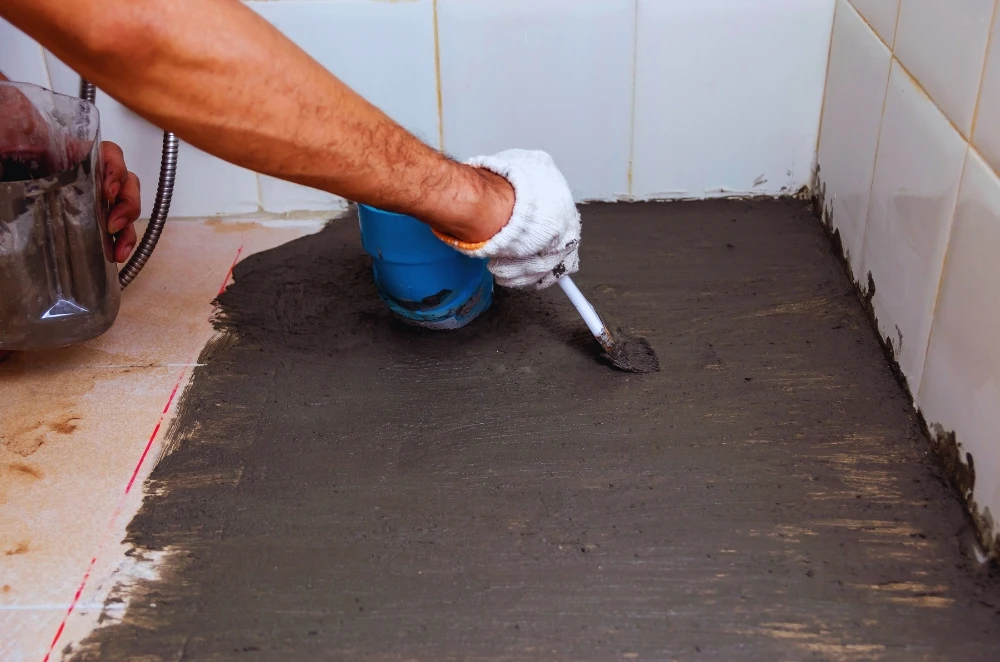A couple of years ago, I helped a friend renovate a Federation-style terrace in Sydney's Inner West. The bathroom looked flawless on the surface — elegant tiling, brand new fittings — but just weeks later, faint water stains started ghosting across the ceiling downstairs. Turns out, the waterproofing layer had been skipped entirely by a rogue builder. That’s when we realised the true value of bathroom waterproofing experts, especially in a city where moisture, weather, and ageing construction collide.
Whether you're building or renovating, here's what every Australian homeowner should know about getting bathroom waterproofing right the first time.
Spotting the signs of a waterproofing failure
Bathroom waterproofing is often invisible… until it fails. Early signs usually appear in the following ways:
- Mould or mildew outside wet zones (like along walls or ceilings)
- Tiles lifting or grout cracking with no physical impact
- Persistent damp smells even with good ventilation
- Water stains on ceilings or adjoining rooms
These issues aren’t just cosmetic — they’re signals of potential structural damage. If ignored, they can lead to wood rot, concrete cancer, and damage that spreads well beyond the bathroom itself. Early detection and professional advice can save you thousands down the line.
Understanding your legal obligations in NSW
In New South Wales, waterproofing work is not just a best practice — it's regulated. According to NSW Fair Trading, waterproofing must be performed by someone with a valid waterproofing licence if the work is valued at more than $5,000 (including labour and materials).
The National Construction Code (NCC) also outlines clear guidelines on where waterproofing is required, including:
- Entire shower floors and walls
- 150mm up walls around baths, vanities, and other wet areas
- Junctions between walls and floors
For more details, refer to this official guide to waterproofing works.
Also worth noting: non-compliant work can void your building insurance. If a claim is made and the waterproofing is found to be faulty or DIY, insurers can refuse to pay out. That’s another compelling reason to ensure your tradies are properly licensed and up to date with code.
How waterproofing actually works (and where it goes)
Waterproofing involves more than just rolling on a sealant. A proper system involves:
- Surface prep – cleaning, levelling, and priming surfaces.
- Membrane application – applying a waterproof membrane in multiple coats.
- Sealing junctions – reinforcing wall-floor joints and around penetrations.
- Drying time & testing – allowing full curing time before tiling.
Each layer needs time to cure — and cutting corners to “speed up the job” often causes failure. Builders rushing timelines sometimes skip drying steps or use incompatible adhesives over membranes, which breaks the system’s integrity.
Common waterproofing myths (and what’s actually true)
Let’s bust a few common myths:
- ❌ "Tiles are waterproof."
- Most ceramic tiles are water-resistant, but not waterproof. It’s the membrane underneath that does the heavy lifting.
- ❌ "One coat is enough."
- Most systems require two coats — plus time between each for curing.
- ❌ "You can DIY with just silicone."
- Waterproofing membranes are not the same as sealants. And DIY work usually won’t comply with local codes or pass inspection.
Another myth? That all waterproofers are the same. In reality, experience and product familiarity matter. Membranes react differently in varying temperatures, surfaces, and substructures — especially in humid or coastal climates like Sydney’s.
Choosing the right contractor for waterproofing

When hiring a waterproofing professional, it’s worth asking:
- Are they licensed and insured?
- What membrane system do they use?
- Do they follow AS 3740 and NCC guidelines?
- Can they provide before/after images or references?
Don’t just go for the cheapest quote — one corner cut could mean thousands in repairs down the track.
Ask them if they also perform flood tests (where the membrane is tested with standing water before tiling begins). It’s not always required, but it’s a great sign of quality assurance.
Waterproofing across different bathroom types
The way you waterproof will depend on the bathroom setup. For example:
- Ensuites in modern apartments may need full coverage due to compact layouts.
- Open showers or wet-room styles require a membrane across the full floor area.
- Older homes may need pre-levelling to meet fall requirements (for water drainage).
New builds offer a clean slate, but retrofits — especially in heritage homes — require extra planning and may involve removing plasterboard or lifting subfloors. That’s where specialised teams with renovation experience really shine.
Don’t forget your shower zone
The shower is the most abused part of any bathroom. Water constantly strikes the walls and floor at high pressure, so waterproofing failure here can be catastrophic.
We recommend checking out these practical tips on shower waterproofing, from selecting the right membranes to sealing penetrations like taps and shower mixers.
A well-waterproofed shower should last over a decade without issue. Anything less is often a sign of shortcuts or incompatible products.
Final thoughts: Waterproofing is an investment, not an expense
I’ve seen too many Aussie homes suffer from what we call the “invisible disaster” — structural water damage that could’ve been prevented for a fraction of the cost. If you're building or renovating, treat waterproofing as a priority, not a line item to cut.
Whether you live in a high-rise apartment or a Queenslander with timber floors, water always finds the weakest point. Getting your bathroom waterproofed properly is less about ticking a box and more about protecting your biggest investment: your home.
And if you’re not sure whether your home’s up to scratch? There’s no harm in getting an inspection. The peace of mind is worth it.



